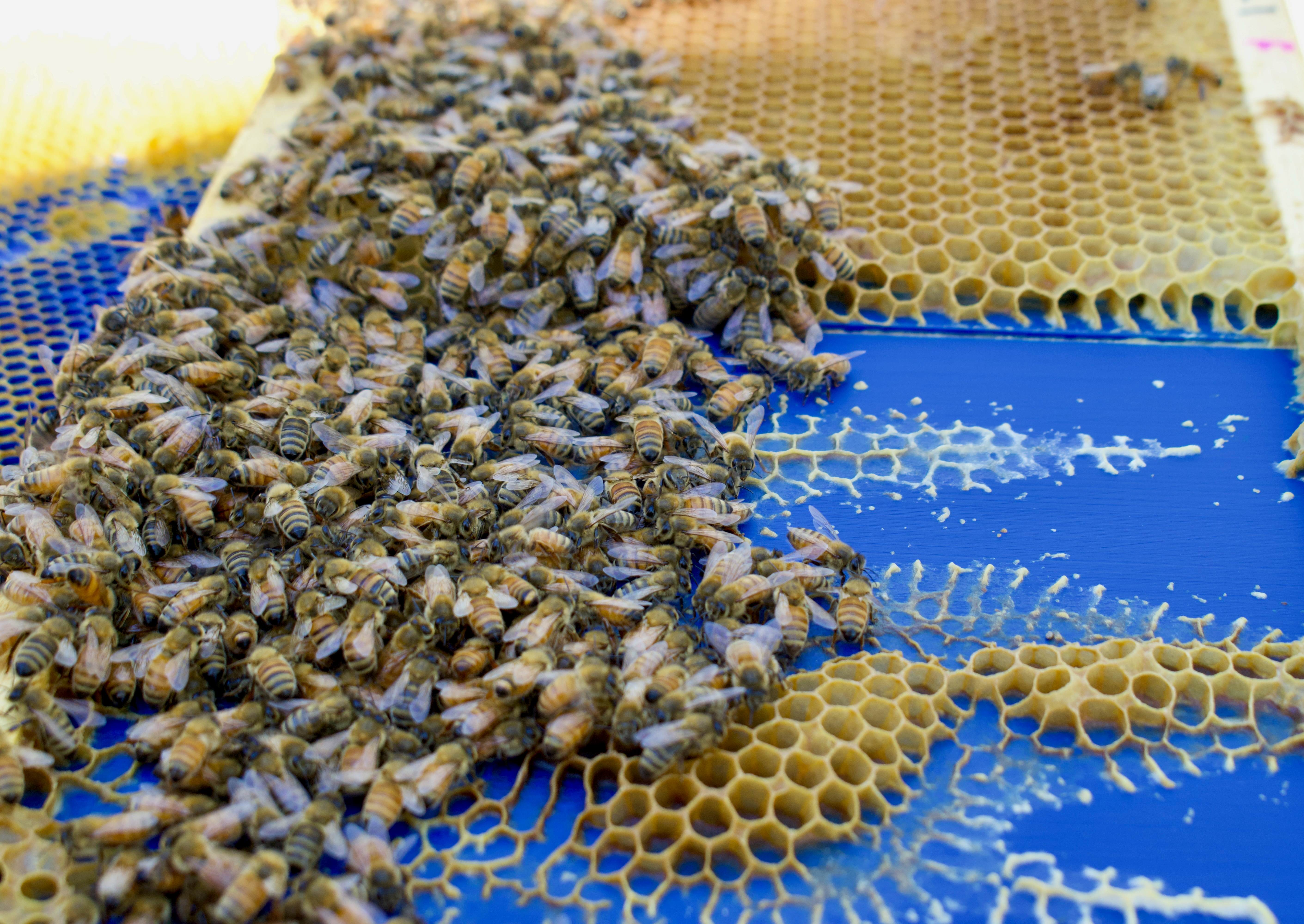Media release
From:
Busy bees can build the right hive from tricky foundations
Merging, tilting, and layering honeycombs allow bees to adapt to available space
There’s more than one way to build a honeybee hive, depending on the needs of the bees, according to a study published August 26th in the open-access journal PLOS Biology by Golnar Gharooni-Fard of the University of Colorado Boulder, USA, and colleagues.
Honeybees are renowned for their ability to build intricate hives where they can store their food and raise their larvae. Hive construction is the collaborative effort of thousands of hard-working bees, which also demonstrate a knack for adjusting their honeycomb structures to account for available space and resources. In this study, Gharooni-Fard and colleagues investigated the specific strategies that honeybees use to adapt to different building conditions.
The authors presented honeybee colonies with varying sizes of 3D-printed plastic honeycomb foundations upon which to build up their own wax-crafted combs. Using X-ray microscopy, the team was able to visualize and quantify the bees’ building strategies. When the foundation honeycombs were too small to accommodate worker bees, the insects would merge multiple cells to create overlying spaces of adequate size. If the foundation cells were too large, the bees built their honeycombs with slanted borders, effectively shrinking the opening of each cell while preserving depth for storage. And if the foundation cells were extra large, the bees simply built a new layer of regular-sized honeycombs on top, using the borders of the plastic foundation as support.
These results demonstrate that honeybee hive-building does not follow a fixed blueprint, but instead is a flexible process wherein a colony can apply a variety of strategies to adapt to different starting conditions. This study not only provides some preliminary insights into the complex behavior of bees, but also has implications for the design of bio-inspired engineering systems.
Corresponding author Francisco López Jiménez adds, “We have provided bees with 3D printed panels with a hexagonal pattern already imprinted, but with a size different of that preferred by the bees. We have found that they use at least three different techniques to adapt these foundations to a pattern more suitable to their needs, including complex three-dimensional arrangements.”
Co-corresponding author Orit Peleg notes, “These tiny builders seem to have an intuitive understanding of the physics behind collective construction. We're just beginning to understand the rich set of strategies they use - tilting, merging, layering - to shape structures that meet their needs in remarkably adaptable ways.”
López Jiménez concludes, “It is striking that the patterns that bees used to adapt to constraints due to irregular geometries are similar to those in very different systems. These include the cracks that appear in mud as it dries off, or the patterns in graphene and other atomic crystals.”
Multimedia







 International
International


